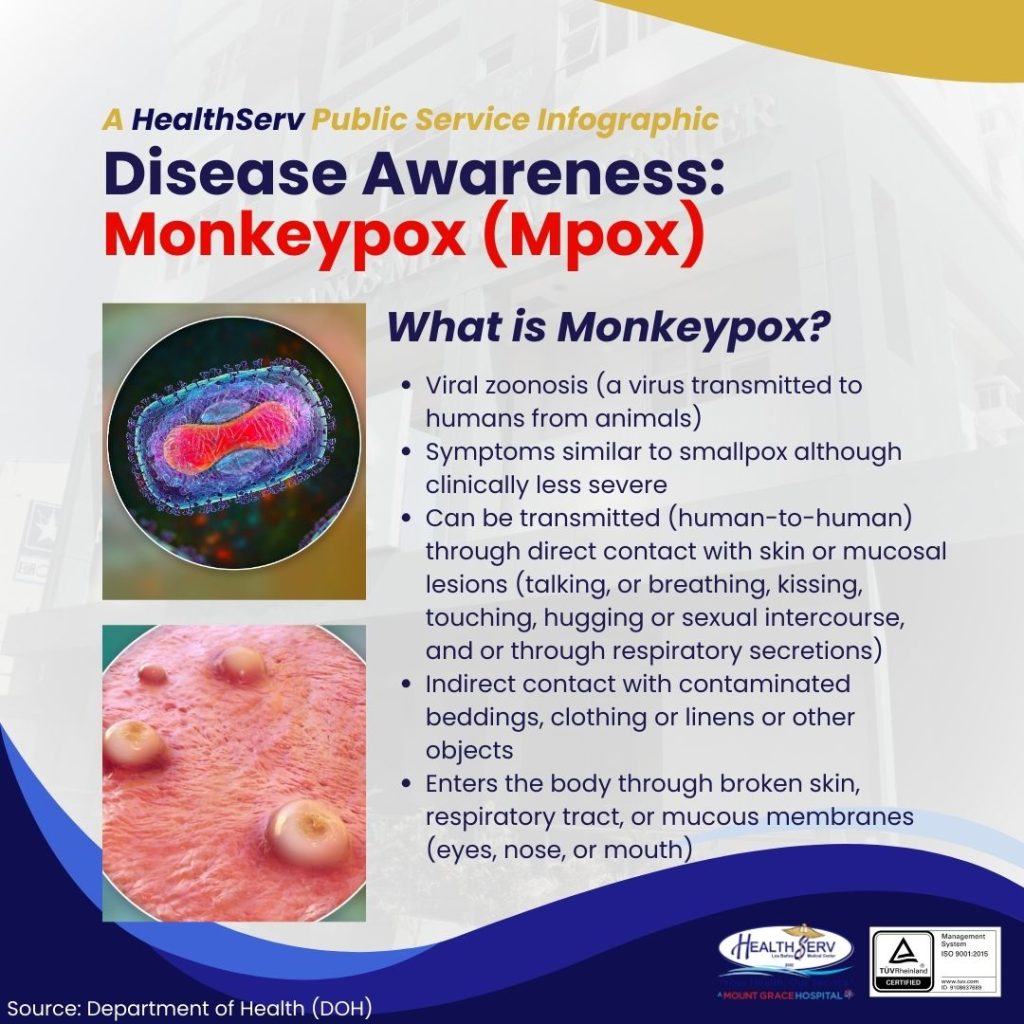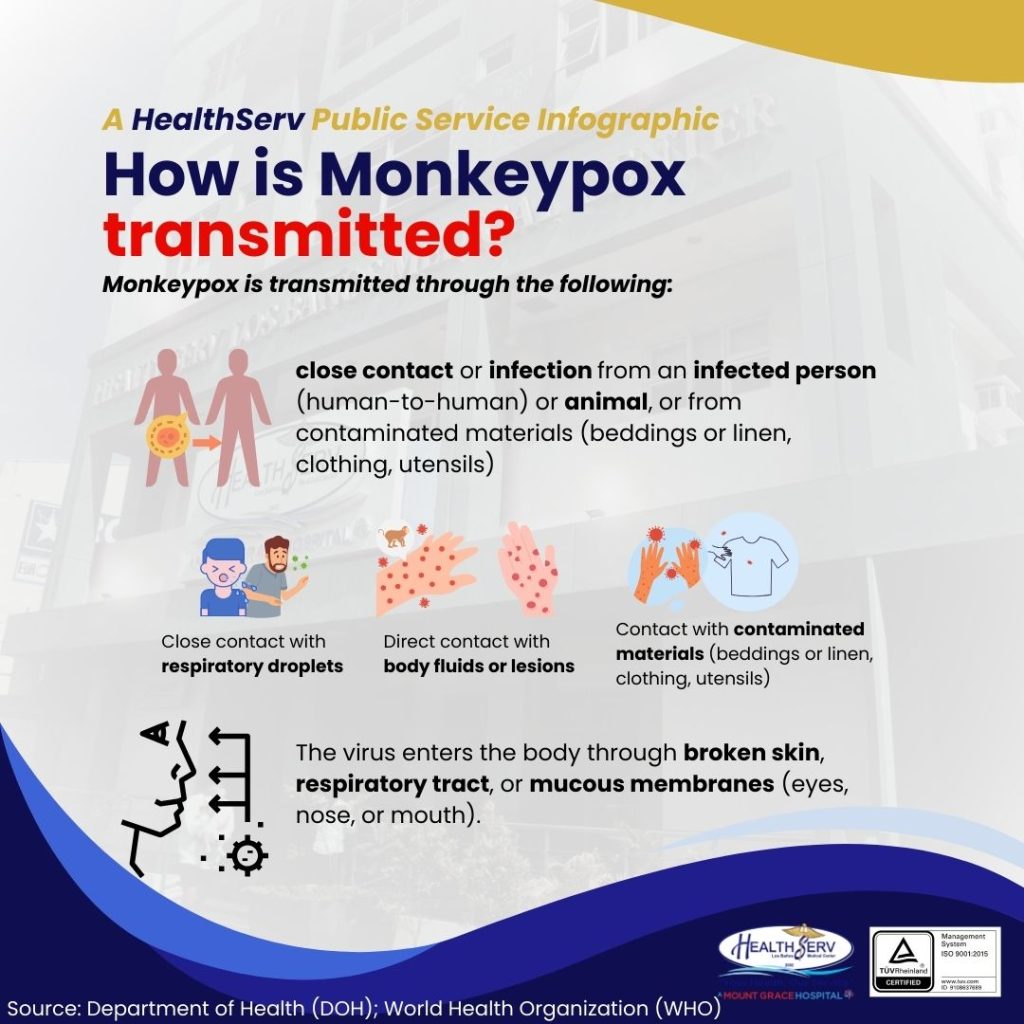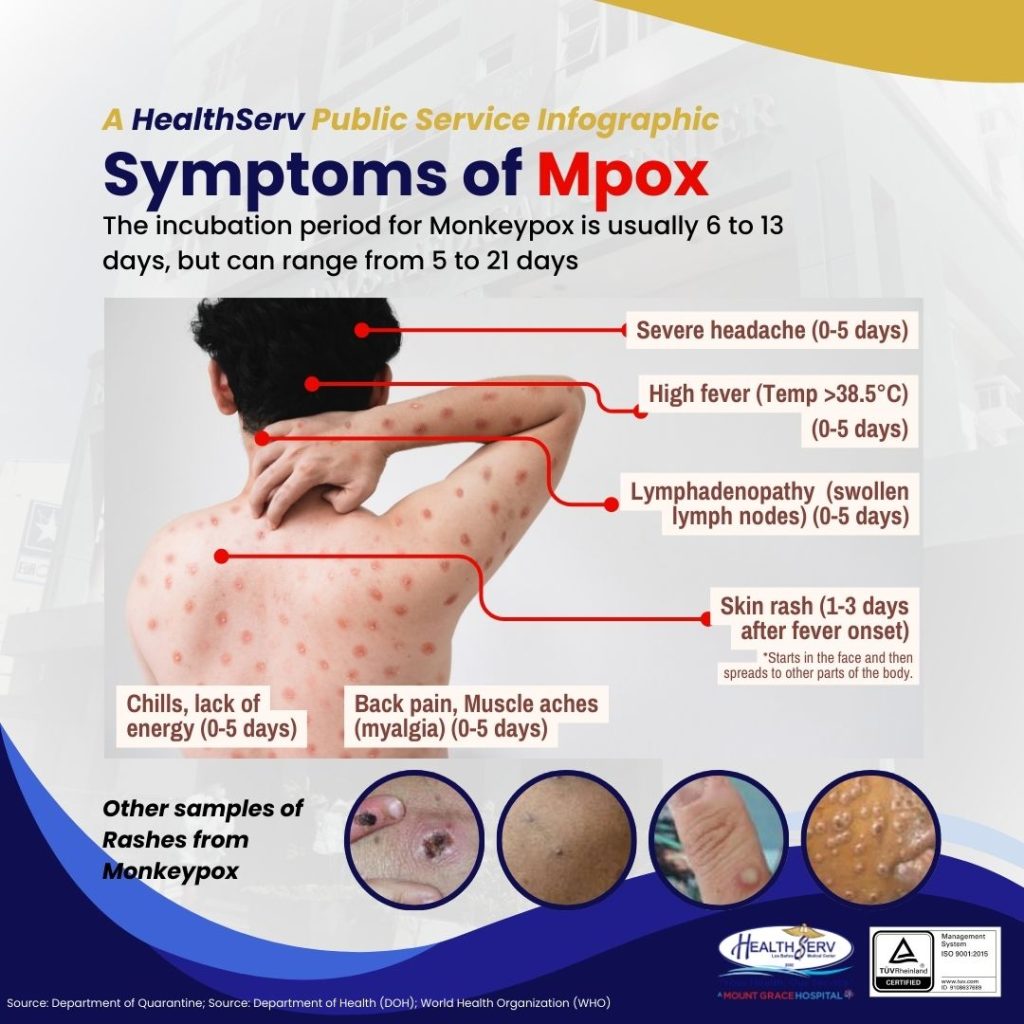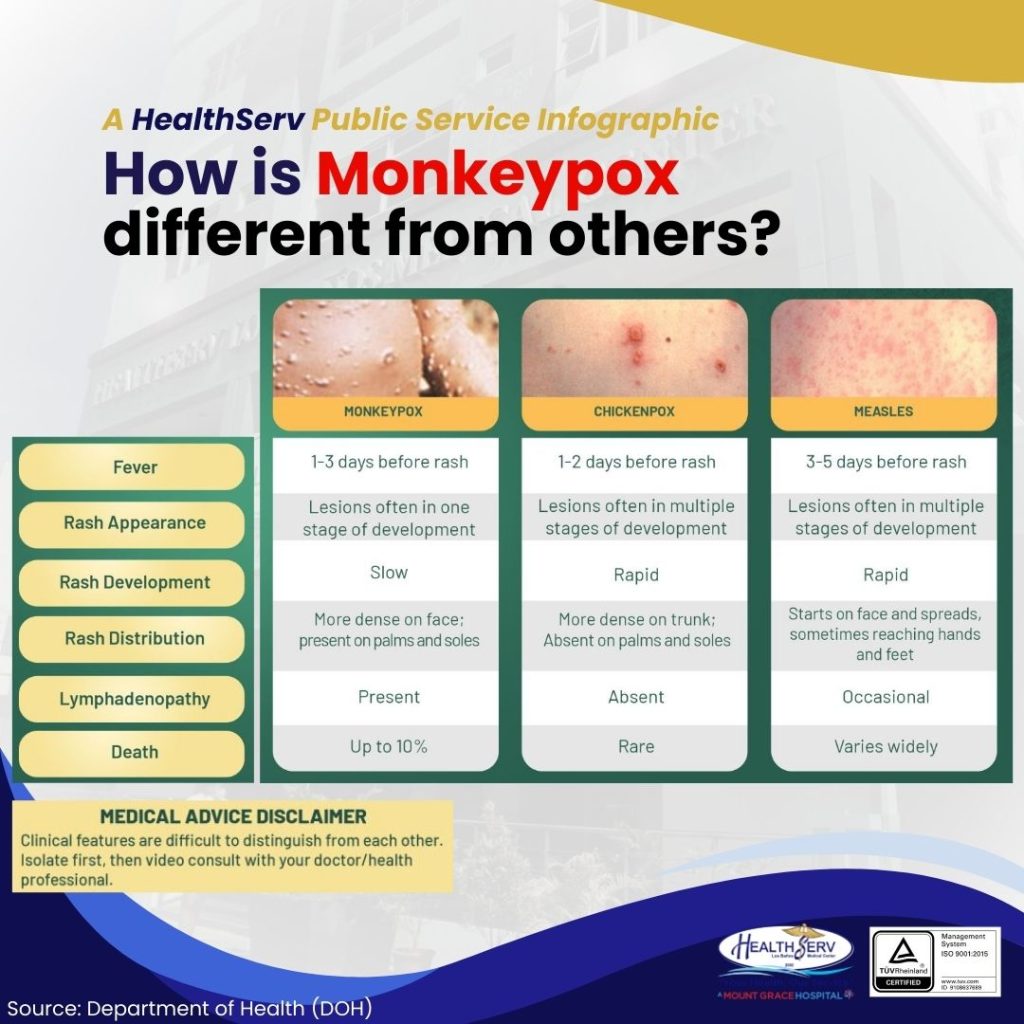
CLINIC HOURS
Mon-Sat 8am–5pm | Sun 9am–12nn

8817 National Highway Batong Malake,
Los Baños, Laguna, Philippines 4030

Mon-Sat 8am–5pm | Sun 9am–12nn

Los Baños, Laguna, Philippines 4030

Introduction
With confirmed cases of Monkeypox in the Philippines, it is crucial to stay informed and take the necessary precautions to protect yourself and your community. Monkeypox, a rare viral disease, is transmitted to humans through close contact with an infected person or animal, or with contaminated materials. The symptoms can be similar to those of Chickenpox and Measles, but there are important differences that everyone should be aware of. This blog will provide you with vital information on Monkeypox, how it is transmitted, symptoms to look out for, and preventive measures.
What is Monkeypox?
Monkeypox is a viral zoonosis (a virus transmitted to humans from animals) with symptoms similar to those seen in the past in smallpox patients, although it is clinically less severe. The virus belongs to the Orthopoxvirus genus, which includes the variola virus (which causes smallpox) and the vaccinia virus (used in the smallpox vaccine). The first human case of Monkeypox was identified in 1970 in the Democratic Republic of the Congo, and the disease has since been reported in several other central and western African countries.
Transmission

Monkeypox can be transmitted to humans through close contact with an infected person or animal, or with material contaminated with the virus. The virus enters the body through broken skin, respiratory tract, or mucous membranes (eyes, nose, or mouth). Human-to-human transmission primarily occurs through:
Symptoms

The incubation period for Monkeypox is usually 6 to 13 days, but can range from 5 to 21 days. The infection can be divided into two periods:
The disease is usually self-limiting with symptoms lasting from 2 to 4 weeks. Severe cases can occur, particularly in children, pregnant women, or individuals with weakened immune systems.
Comparison with Chickenpox and Measles

It is important to differentiate Monkeypox from Chickenpox and Measles. Here’s a brief comparison:
To prevent the spread of Monkeypox, it is important to:
Currently, there is no specific treatment for Monkeypox. However, outbreaks can be controlled. Supportive care and symptom management are essential, and some antiviral agents may be considered in severe cases. Vaccination against smallpox has been shown to be about 85% effective in preventing Monkeypox and may be considered for high-risk groups.

When to Seek Medical Attention
If you or someone you know develops symptoms such as fever, swollen lymph nodes, and a characteristic rash, it is important to seek medical advice immediately. Early detection and isolation can prevent the spread of the virus and reduce the severity of the disease.
Conclusion
Staying informed about Monkeypox and taking the necessary precautions can help prevent the spread of the virus. As with any public health concern, it is crucial to follow the guidelines provided by health authorities and seek medical attention if you suspect you or someone you know may have contracted the virus.
Images to Include:
Clinic: Mon-Sat (8am-5pm) | Sat-Sun (9am-12nn) Email: info@healthserv.com.ph | Contact Us
Copyright © 2025 - HealthServ Los Baños Medical Center. All Rights Reserved